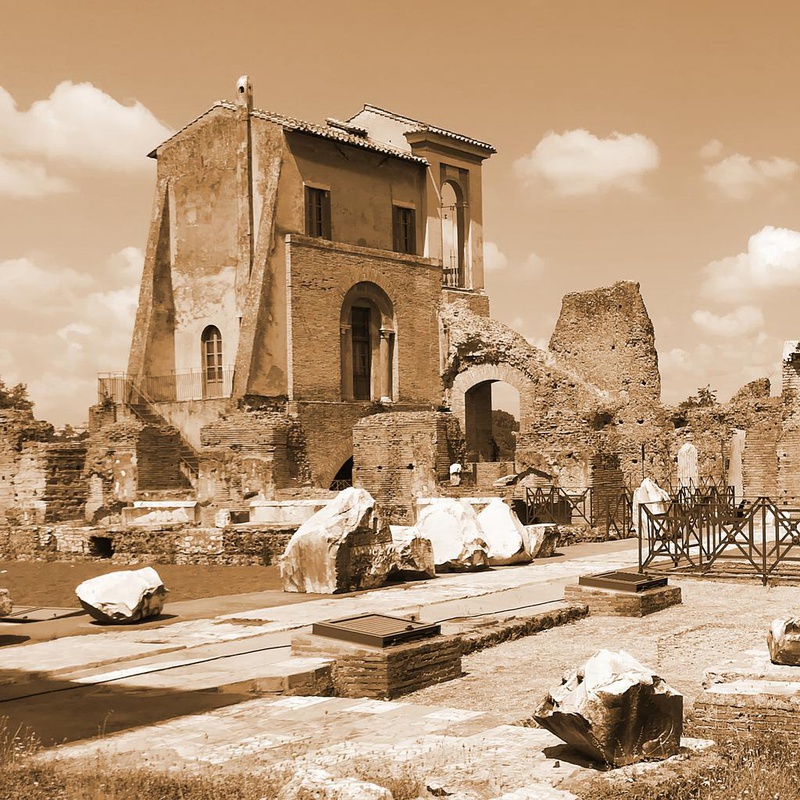Posted by Shazarch on 18 Mar 2021
Domus Flavia
1st century CE, Palatine Hill, Rome
Archaeological site
The Domus Flavia, along with the Domus Augustana and the Palatine Stadium, forms the architectural complex built by Domitian, which corresponds to the public sector of the emperor's residence and representation. At the center of the building stood an immense rectangular peristyle originally surrounded by a portico topped by marble columns with composite capitals, of which some remains are visible along the perimeter today. Inside, there is a recognizable octagonal structure that perhaps housed a majestic marble fountain surrounded by a labyrinth of channels. On the northern side of the peristyle, two doors opened onto a large room identified as the Aula Regia. This structure measured approximately 1280 square meters and was delimited by mighty brick walls at least 30 meters high. Eight niches in the walls were high enough to accommodate colossal statues of as many deities. In this area, two intact statues of Hercules and Dionysus and only the head of Jupiter were discovered in 1724. The niches were framed by shrines and a colonnade elevated on multiple levels and decorated with a frieze of military motifs. Through two side doors, the so-called Aula Regia led to a room called the Basilica and another called the Lararium. At the end of the peristyle, on the opposite side of the so-called Aula Regia, a sumptuous entrance led directly into a hall, also characterized by extreme luxury: marble, statues, and columns were to cover the entire environment. However, the opus sectile flooring that we see today, raised above a hypocaust to heat the room, is the work of subsequent renovations. According to ancient sources, Domitian frequently offered his guests sumptuous banquets based on sturgeon or turbot caviar and eccentricities. For example, as Cassius Dio tells us, he once painted all the walls and servants black and forced the participants to eat in the dark as if it were their own funeral banquet. This hall was perfectly suited to host luxurious banquets, bordering on the divine, and given Domitian's customary assimilation with Jupiter, this could be the famous room called the cenatio Iovis. Symmetrically, two other rooms opened on its sides, of which only the one on the right has remained intact: in the center, there is an oval fountain that could be seen by the guests through the large windows that opened towards the triclinium. At the emperor's banquets, guests were divided according to rank and proximity to the imperial family and were placed in the most suitable rooms. This could be one of the reasons why there are so many dining rooms of different shapes and sizes.
